- Home
- Anthony Burgess
Collected Poems Page 2
Collected Poems Read online
Page 2
The present new and representative collection brings together more than four hundred pieces. One fifth of this work is published here for the first time, including the major poem ‘An Essay on Censorship’ (1989). In addition to that large ‘new’ work is a number of hitherto unpublished sonnets and occasional verses.
Where possible, Collected Poems (including ‘Belli’s Blasphemous Bible’) draws on material that is either archived, or in first edition out-of-print novels. Manuscripts have been sourced from two archives. Roughly sixty percent comes from the Harry Ransom Center at the University of Texas at Austin. The rest comes from the International Anthony Burgess Foundation (IABF) in Manchester; this remarkably useful collection has received substantial investment recently, and its catalogue has been made available online. The IABF also has most of Burgess’s own books. These were also inspected, and a few poems were found in inserted notes or on flyleaves. The present book is the first time Burgess manuscript material from the Austin and Manchester archives have been combined into a single substantive poetry collection.
Collected Poems has been an assuredly difficult work to compile. The multitude of manuscripts and published variants – mainly resulting from Burgess’s sometimes revisionist approach to writing poetry – has presented significant editorial challenges. Where possible, the edition has drawn directly on material from the archive collections, and/or from first editions of novels, generally favouring earlier drafts. Sometimes, this has purely been for sanity’s sake. Frequently, the level of difference is only slight, and perhaps results from Burgess typing later versions from memory. For example, the first line of the short poem spoken by Sir Benjamin in The Eve of St Venus (written c. 1951, published 1964) begins ‘Heroes are dead to them’. In Burgess’s Banbury diary (1954), the poem begins ‘Heroes are dead to us’. In this case, the earlier version not only works better as a self-contained stanza, but also seems more generalizable. Complexities concerning which version to use are especially present in the poems that were eventually reused in Byrne (such as ‘The Music of the Spheres’), but which have differing words and punctuation. Here, earlier forms have been used. A multiplicity of these sorts of decisions have been made, and the endnotes provide brief accounts where appropriate.
Collected Poems features a long sequence of bawdy and mainly biblical sonnets from a manuscript titled ‘Belli’s Blasphemous Bible’. Burgess also called this ‘Belli’s Bible for Blasphemers’; there are two main manuscripts of these translations, and both titles are used. (I have opted for the former title, preferring its brevity.) Most of these are translations of the nineteenth-century Roman poet G. G. Belli: five of the sonnets were published in Times Literary Supplement on 23 January 1976 and the complete sequence in ABBA ABBA (1977), a novel about a theoretical meeting between John Keats and Belli. Drafts of these sonnets were handwritten in a 1974 diary, and then worked up into intermediate typewritten drafts. Although the diary shows that Burgess may have translated them in the order that is used in ABBA ABBA, the present edition follows the order of the heavily corrected typescript. This order does not greatly deviate from the sequence as it appeared in ABBA ABBA, but the endnotes provide guidance where there are variations. As Paul Howard notes5 the translation methods Burgess adopted meant that they each existed in numerous versions before their appearance in the Times Literary Supplement and the subsequent novel ABBA ABBA (1977). Given that these translations of Belli’s Romanesco sonnets were built up through layers of redrafts, it follows that the versions used in Collected Poems should be based on the far more developed sonnets that appeared in TLS and ABBA ABBA. The present sequence draws on these original manuscripts.
As well as some slight lexical variations, these intermediate drafts have different titles to those that appeared in ABBA ABBA. A full account of these differences is provided in the endnotes. The manuscript can in many respects be read as proof of Burgess’s growing confidence in his translations, since there seem to be – on the whole – fewer handwritten corrections added as the manuscript sequence develops. Moreover, Burgess seemingly worked out his line indentation system only around halfway through the ‘Bible’. Accordingly, readers will note that the shape of the sonnets visibly changes; it was decided to maintain these non-standard indentations as they help us learn more about Burgess’s poetics of space. Another striking feature of the manuscript transcriptions is that the word-choices show no particular regard for editorial conservatism. Sometimes, the rude language was amplified for the ‘final’ ABBA ABBA version. Conversely, in other places, the lexis is more conservative in the published book. The pen-corrected sequence of drafts also demonstrates that Burgess’s intentions were chiefly auditory. A peculiar example can be seen in the last sonnet in the ABBA ABBA sequence (‘The Last Judgment’). On the last line of this sonnet, ‘Er-phwoo’ – the sound of a candle being blown out – was originally written as ‘Phwoo’, and then corrected by hand. Even wind effects were subject to careful sonic reassessment; as well as a poet, Burgess was a musician.
In addition to the source manuscripts used in this edition, a large number of early handwritten translations of the Belli sonnets are held at the Harry Ransom Center archive in Austin, Texas. Additionally, early drafts can be inspected in the Burgess Foundation archive in Manchester. While many of these fragments seem quite different from the versions that were eventually published in ABBA ABBA, none of them offer a particularly elegant array of words upon the page; there are gaps in the lines and rhymes are often still to be worked out. Many sonnets have indeterminately re-worked words and phrases, and to display them here would not make for smooth reading. Hence, the later drafts were used. The sequence, then, draws on a single set of manuscripts, which presumably formed the basis for ABBA ABBA. Four other completed sonnets that are Burgess originals are included in the sequence, just as they are in ABBA ABBA (‘The Bet’, ‘Two Uses for Ashes’, ‘Privy Matters’ and ‘The orchidaceous catalogue begins’). The previously published versions of these sonnets are substantially the same as the later drafts that are held at the archive in Texas, with one exception. The poem beginning ‘The orchidaceous catalogue begins’ does not go as far as spelling out that the name in question is that of the critic Geoffrey Grigson, whereas the archive version does. The full name is restored in the present version.
There are notable exceptions to the overall sequential logic of the Belli translations. Three previously unpublished sonnets (‘Spaniards’, ‘Work’ and ‘Local Industry’) have simply been added at the end of the ‘Bible’, just before Burgess’s own sonnets from the novel. ‘Local Industry’ was originally included as part of the sequence, and appears at the end of the draft sequence, but wasn’t used in ABBA ABBA. Another two were found elsewhere, but – being bawdy sonnets that reference the trappings of Catholicism – fit in quite naturally. Unlike the other sonnets that Burgess chose to translate, they have a markedly personal tone (‘Work? Me?’), and do not directly tell biblical tales. These fruity sonnets were seemingly not produced as part of the main sequence of translations. Accordingly, it is unclear where they were meant to be placed.
Within the manuscripts used for ‘Belli’s Blasphemous Bible’ is a shorter sequence of works that were seemingly intended to be published for a larger audience, in Playboy magazine. The choice of this magazine is not as surprising as it seems. A year before Burgess started his translations6, an interview with Burgess by C. Robert Jennings appeared in the September 1974 edition of Playboy. Through this, and no doubt through his voracious general reading, Burgess would have been aware that the magazine published contemporaries such as Ian Fleming, Ray Bradbury, Roald Dahl, Norman Mailer and – much later – Vladimir Nabokov. The obscene sonnets intended for Playboy may, accordingly, have been intended as a sampler of the current work in progress. In this respect, it would have been comparable with the sequence that was published in Times Literary Supplement, although the poems selected for inclusion in Playboy were completely different. The intended selection was: ‘
Joseph the Jew (II)’ ‘All About Eve’; ‘A Reply’; ‘The First Clothes’; ‘The State of Innocence’ and;‘Joseph the Jew (I)’. Ultimately, it is unclear as to why the sequence never saw publication in Playboy, but that Burgess selected works for inclusion demonstrates that he was seeking wider audiences for his translations beyond specialist literary journals.
Burgess’s verse manuscripts were either typewritten or handwritten. Many of his poems and translations (especially the Belli sonnets) are playfully illustrated, which frequently brings fun to otherwise mechanical transcription and inspection work. He seemingly wrote on any available material, including envelopes, matchboxes, scraps of card, foolscap paper, diaries and large, small, or very small notebooks. Later evidence of digital manuscripts exists in the form of printouts (including sections from Byrne and an unfinished opera about Freud); Burgess possessed an IBM personal computer, bought in 1985. The sonnet addressed ‘To Chas’ was sent to the IABF by email, and the sonnet about Agincourt derived from an image of a typescript posted online by a manuscript dealer. Sometimes, drafts appear in multiple places. Much of the work is neatly typed, especially on note-o-gram business communication forms, such as the manuscript of ‘The trouble is, you see, getting there’. The original copies of the note-o-gram sonnets are available at the IABF, and photocopies are held in the Harry Ransom Center. Burgess’s use of paper suggests a predilection for tactility, playfulness, and a creative use of space, which – regrettably – is not always easy to convey in print. Generally speaking, it seems Burgess preferred pen and paper, even though his later works were written in the era of the PC.
Deciding which poems to exclude has followed a general logic which is open to debate and may be found to be faulty. As a guiding principle, texts have been selected which have been unavailable for a long time, either because they were out of print, or because they were previously unpublished. Generally speaking, verses that appear to be deliberately bad (usually in the service of a novel’s plot) have been excluded. However, some texts in this general category are so entertaining, so rounded, or so creative that they are included here. A notable example of this is the long poem ‘Not, of course, that either of us thought’ from One Hand Clapping (1961), which – while reflecting its fictional writer’s sense of camp drama – shows a remarkable understanding of the excesses of the emerging styles of the time. Some texts, while determinedly possessing a poetic quality, are too undeveloped for inclusion and would make for uneven reading. A number of fragments, most especially from the Enderby novels, appear in an unfinished state, with words like ‘plonk’ or ‘something’ used to describe a poet’s mind at work; many of these are not included. It will be noted that Byrne is not included here, and – arguably – it should be. However, as a major work that is still in print, and one that has recently seen new editions, it is excluded. Readers are strongly recommended to read Byrne immediately after Collected Poems. The same goes for Napoleon Symphony. Likewise, with a handful of notable exceptions (mainly from The Complete Enderby), other works currently in print (usually meaning embedded within novels) are not included. A collection of the plays is expected to be published as a separate edition. Accordingly, extracts from dramatic works are not included here. Whether these omissions detract from the book, and whether the general logic of the edition stands up to scrutiny is, of course, for the reader to decide.
It is difficult to provide a neat summary of the many styles, the linguistic inventiveness, the endless formal experimentation and the bewildering expansiveness of Burgess’s poetic subjects. For all that, some readers may accuse Burgess of burning his poetic candle at both ends. Of course, his detractors were already saying that in the 1970s when he was yet to write long works like Napoleon Symphony, Byrne, ‘Augustine and Pelagius’ and the ‘Essay on Censorship’. And yet, Burgess wrote a lot of very good poetry in between other massive literary, film, and journalistic endeavours. In all of his chosen forms – poetry, music and prose – Burgess’s intention remained (mainly) serious, and the scale impressive.
Either way, Burgess’s poetry was a central part of his career as a best-selling novelist, and his verse was performed on screens and stages the world over. His poetry was seen, heard, read and watched – in cinemas and on television – by millions of people. It may be the ultimate irony that the widespread availability of the work may have obscured the fact that Anthony Burgess was, first and last, a poet. He also remains a productive writer. There is still much to surprise and delight new and existing readers. Hopefully, that includes the present work for all its faults.
____________________________________________________
1 Little Wilson and Big God (London: Heinemann, 1987), p. 356.
2 They Wrote in English (Milan: Tramontana, 1979), vol. 2, p. 553.
3 Ibid.
4 ‘When It is All Over’, ‘Wir Danken Unsrem Führer’, ‘Girl’, ‘To Amaryllis after the Dance’, ‘Orpheus and Eurydice’, ‘All the ore’ (retitled ‘Jeweller’ by J.J.W. Wilson), ‘ A History’, and ‘The Lowdown on Art’.,
5 Paul Howard, ‘All Right, That’s Not a Literal Translation’: Cribs, Licence and Embellishment in the Burgess Versions of Belli’s Sonetti Romaneschi’, Modern Language Review 108:3, July 2013, pp. 700–20.,
6 See Howard (2013), p. 702.
ACKNOWLEDGEMENTS
While collecting the poetry of Anthony Burgess has taken much longer than first anticipated, the experience has provided me with the exceptional opportunities to work with some truly extraordinary people. The sense of responsibility has been enormous, but the sense of collegiality has been much bigger. I am indebted to many people. The first person to support me in this particular pursuit was Liana Burgess, the poet’s widow in the meadow. Through Liana, I met Professor Andrew Biswell, whose exceptional tutelage, knowledge, and incredible patience has been of central importance to the production of this work and its editor. The following staff at the International Anthony Burgess Foundation (past and present) provided unequalled motivation and practical assistance both directly and indirectly: Dr Alan Roughley, Will Carr, Anna Edwards, Paula Price, Tina Green, Ian Carrington, and Dr Graham Foster. I have been lucky to benefit from the camaraderie and wisdom of the following Burgessians: Dr Rob Spence, the sadly-missed Dr Alan Shockley, Dr Nuria Belastgui, Yves Buelens, and Dr Jim Clarke. Particular thanks go to Michael Schmidt from Carcanet Press for his quiet and enduring patience. Peter Philpott was an especially careful examiner of both prose and punctuation. Georgina Gibbs helped me begin the end. Dr Katy Beavers provided more help than can be adequately recorded here.
LONGER POEMS, SEQUENCES, AND NARRATIVE WORKS
AN ESSAY ON CENSORSHIP
A book is perilous, a book can slay:
This is the text we ponder on today,
Hence sing the Censor, though our preference is
To swing the censer at his obsequies,
The Censor, whose twin tasks, when Rome held sway,
Were to count citizens, then make them pay,
But now whose proper function is defined
As preying not on money but on mind.
Suppression is the word: it operates
When free intelligence communicates
With free intelligence to clarify
The nature of this life beneath the sky,
Even beyond it. Image, verse or prose,
The actor’s rhetoric or nudist’s pose,
The painter’s brush-strokes or the camera’s clicks,
Whether the field be faith or politics,
The social ambit or the amorous life,
The Censor’s poised, with napalm or with knife,
Communicate with structure and in stone,
As does the architect; or else intone
A complex symphony or artless tune,
And then your skill’s theoretically immune,
Unless you were a son of Israel
In the bad German time or, sad to tell,
Your name was Wagner in the Jew
ish state,
Though briefly. Humanly communicate
Then fear inhuman seekers to suppress.
To freedom’s partisans this breeds distress,
Though the degree of it depends upon
The status of the functionaries who don
The censor’s robes. When small, they underline
The squirm of the parochial philistine;
When large, we shudder with proleptic fright
At a new threat to an old human right.
Authors, who eat and drink what they create,
See the prescriptions of a foreign state
As a mere aspect of a threat diffused
Wherever the free-winging word is used.
A book’s unpublished lest it may offend;
Published, its tenuous life is at an end
While libel seems to mutter. Books are burned
By activists whose muftis have not learned
The truth of Heine’s aphorism: ‘Who
Burns books will soon burn human beings too.’
Proscription can be dangerously bizarre.
In Malta, students of the scalpel are
Denied obstetric primers, for within
Are pictures that inflame and lead to sin.
As for the Marxist bloc – despite glasnost,
Bourgeois morality must not be crossed
And the whole social structure is so frail
It trembles at a breath as at a gale.
For long, in Britain, censorship has worked
In regions where the dark erotic lurked.
The genitalia, and what they do,
Or have done to them, were pronounced taboo.
No quadrilateral descriptive of
The motions of purgation or of love

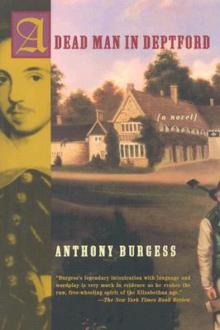 A Dead Man in Deptford
A Dead Man in Deptford Honey for the Bears
Honey for the Bears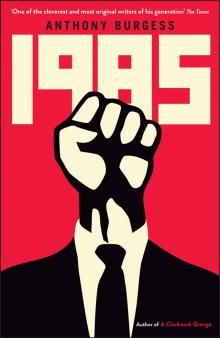 1985
1985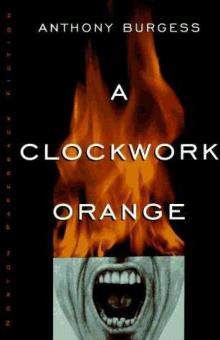 A Clockwork Orange
A Clockwork Orange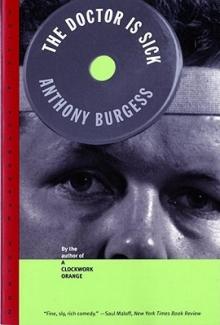 The Doctor Is Sick
The Doctor Is Sick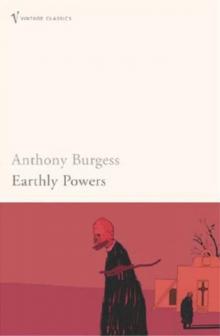 Earthly Powers
Earthly Powers Nothing Like the Sun
Nothing Like the Sun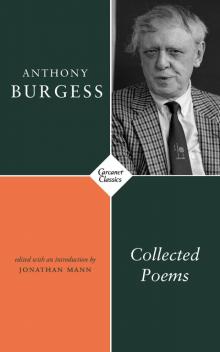 Collected Poems
Collected Poems The Kingdom of the Wicked
The Kingdom of the Wicked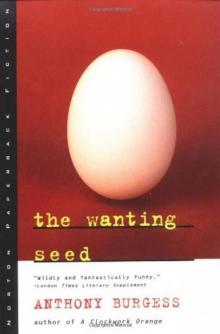 The Wanting Seed
The Wanting Seed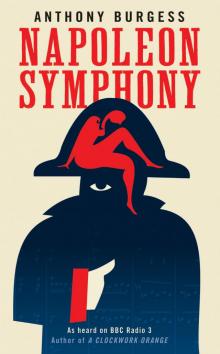 Napoleon Symphony
Napoleon Symphony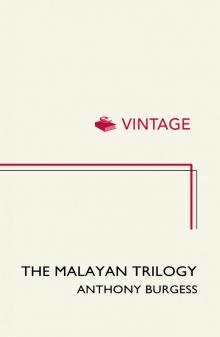 The Malayan Trilogy
The Malayan Trilogy A Long Trip to Teatime
A Long Trip to Teatime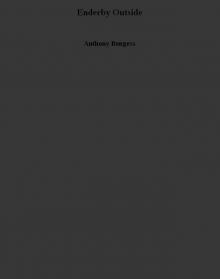 Enderby Outside
Enderby Outside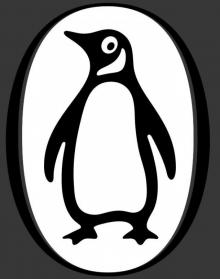 M/F
M/F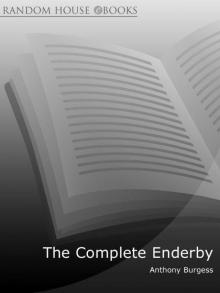 The Complete Enderby
The Complete Enderby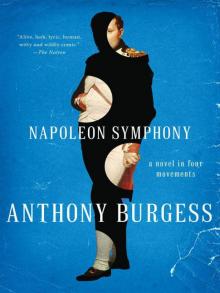 Napoleon Symphony: A Novel in Four Movements
Napoleon Symphony: A Novel in Four Movements Enderby's Dark Lady
Enderby's Dark Lady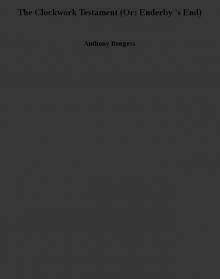 The Clockwork Testament (Or: Enderby 's End)
The Clockwork Testament (Or: Enderby 's End)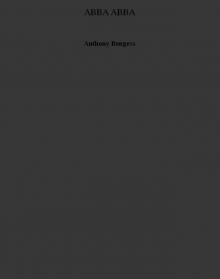 ABBA ABBA
ABBA ABBA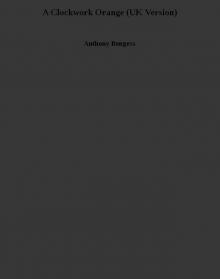 A Clockwork Orange (UK Version)
A Clockwork Orange (UK Version)